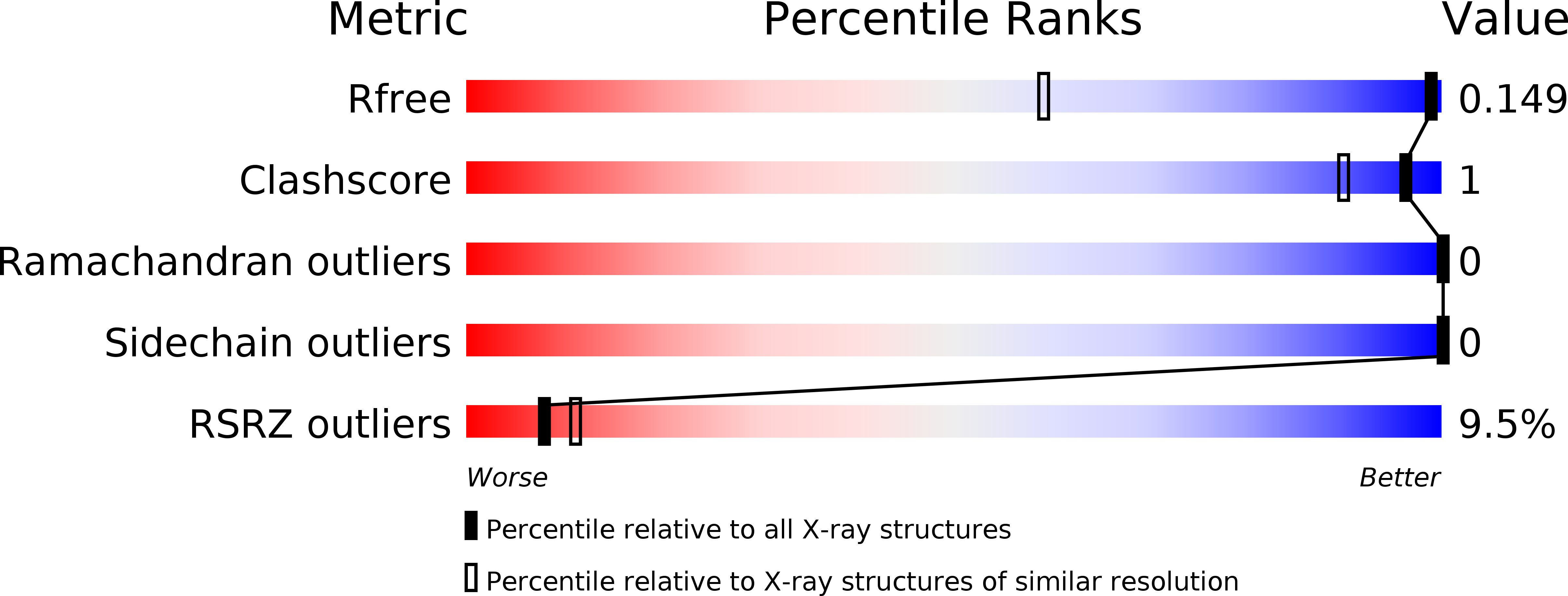The Caenorhabditis elegans protein SAS-5 forms large oligomeric assemblies critical for centriole formation.
Rogala, K.B., Dynes, N.J., Hatzopoulos, G.N., Yan, J., Pong, S.K., Robinson, C.V., Deane, C.M., Gonczy, P., Vakonakis, I.(2015) Elife 4: e07410-e07410
- PubMed: 26023830
- DOI: https://doi.org/10.7554/eLife.07410
- Primary Citation of Related Structures:
4YNH, 4YV4 - PubMed Abstract:
Centrioles are microtubule-based organelles crucial for cell division, sensing and motility. In Caenorhabditis elegans, the onset of centriole formation requires notably the proteins SAS-5 and SAS-6, which have functional equivalents across eukaryotic evolution. Whereas the molecular architecture of SAS-6 and its role in initiating centriole formation are well understood, the mechanisms by which SAS-5 and its relatives function is unclear. Here, we combine biophysical and structural analysis to uncover the architecture of SAS-5 and examine its functional implications in vivo. Our work reveals that two distinct self-associating domains are necessary to form higher-order oligomers of SAS-5: a trimeric coiled coil and a novel globular dimeric Implico domain. Disruption of either domain leads to centriole duplication failure in worm embryos, indicating that large SAS-5 assemblies are necessary for function in vivo.
Organizational Affiliation:
Department of Biochemistry, University of Oxford, Oxford, United Kingdom.














